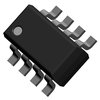参考设计
(21)
Boost Power Supply for Automotive eCall System
PMP7220.8: The reference design is an boost power supply for automotive eCall system. The eCall system is an in-vehicle emergency call service device; it automatically calls for help in the event of a car accident. The reference design is the input stage of the power supply, and it has a wide input voltage range from 4V to 40V, suitable for 12V car battery. The output is 9V, 1.5A (14.25W max) to power the whole eCall system. The power supply can be enabled/disabled by 3.3V or 5V logic signal.
Boost 55V@0.48A for LCD TV LED Backlighting
PMP5299: This 25W discontinuous current-mode boost converter provides a low ripple voltage of less than 1% and efficiency of greater than 94% at 24V input. Aluminum output caps are utilized, ensuring excellent load transient capability. An external control voltage allows the user to adjust the output voltage by +/-10%.
Sepic, 6.0V @ 1.5A
PMP7155: A Sepic converter with wide input voltage range and an output of 6.0V @ 1.5A.
SEPIC (13.5 - 18.0V @ 1.2A) for LED Drivers
PMP4729: PMP4729 is a wide input voltage range (8024V) LED driver for automotive application. It supplies a string of 3-4 LEDs (13.5 .. 18V) with a current of 1.2A. The converter with TPS40211 is in sepic configuration, has a dimming input (100..200 Hz PWM) and additional circuitry for input protection (transient protection, active reverse polarity protection).
LED driver 16.8V@2.6A
PMP4531: high power 2.6A LED driver (sepic) for up to four LEDs P7 out of 12V to 24V input
LED Boost 350mA/700mA with Dimming
PMP4524: universal dimmable DC/DC LED driver in boost configuration for strings up to eight LEDs scalable for 350mA or 700mA output current
8V to 36V Current Mode Boost Controller driven SEPIC
PMP3002: The design implements a TPS40210. The TPS40210 and TPS40211 are wide-input voltage (4.5 V to 52 V), non-synchronous boost controllers. They are suitable for topologies which require a grounded source N-channel FET including boost, flyback, SEPIC and various LED Driver applications. The device features include programmable soft start, overcurrent protection with automatic retry and programmable oscillator frequency. Current mode control provides improved transient response and simplified loop compensation. The main difference between the two parts is the reference voltage to which the error amplifier regulates the FB pin.
Boost Power Supply for Automotive eCall System
PMP7220: This design is a buck converter for automotive as well as for non-automotive applications. It delivers an output voltage of 5.0V @ 70mA at an input voltage range of 9-14V. It can withstand input peaks up to 40V.
9.5V @ 1.5A Automotive Boost Converter
PMP8536: This design is a boost converter for automotive applications to boost the battery voltage to 9.5V @ 1.5A during cranking. It can withstand input peaks up to 40V.
TPS40210, 12V SEPIC
PMP5657.1: Two sepics, 12Vout and 26Vout, both w/ TPS40210, to deal with wide input voltage range 10Vdc to 32Vdc
LED w/ dimming
PMP5632: The PMP5632 is a reference design for a diagnostic device. It's a sepic LED driver with analog dimming.
Boost (50V @ 1A)
PMP5940: This 24V to 50V continuous mode boost converter delivers 50W max with efficiency greater than 96%. The circuit uses the low cost TPS40210 controller, which implements current mode control.
